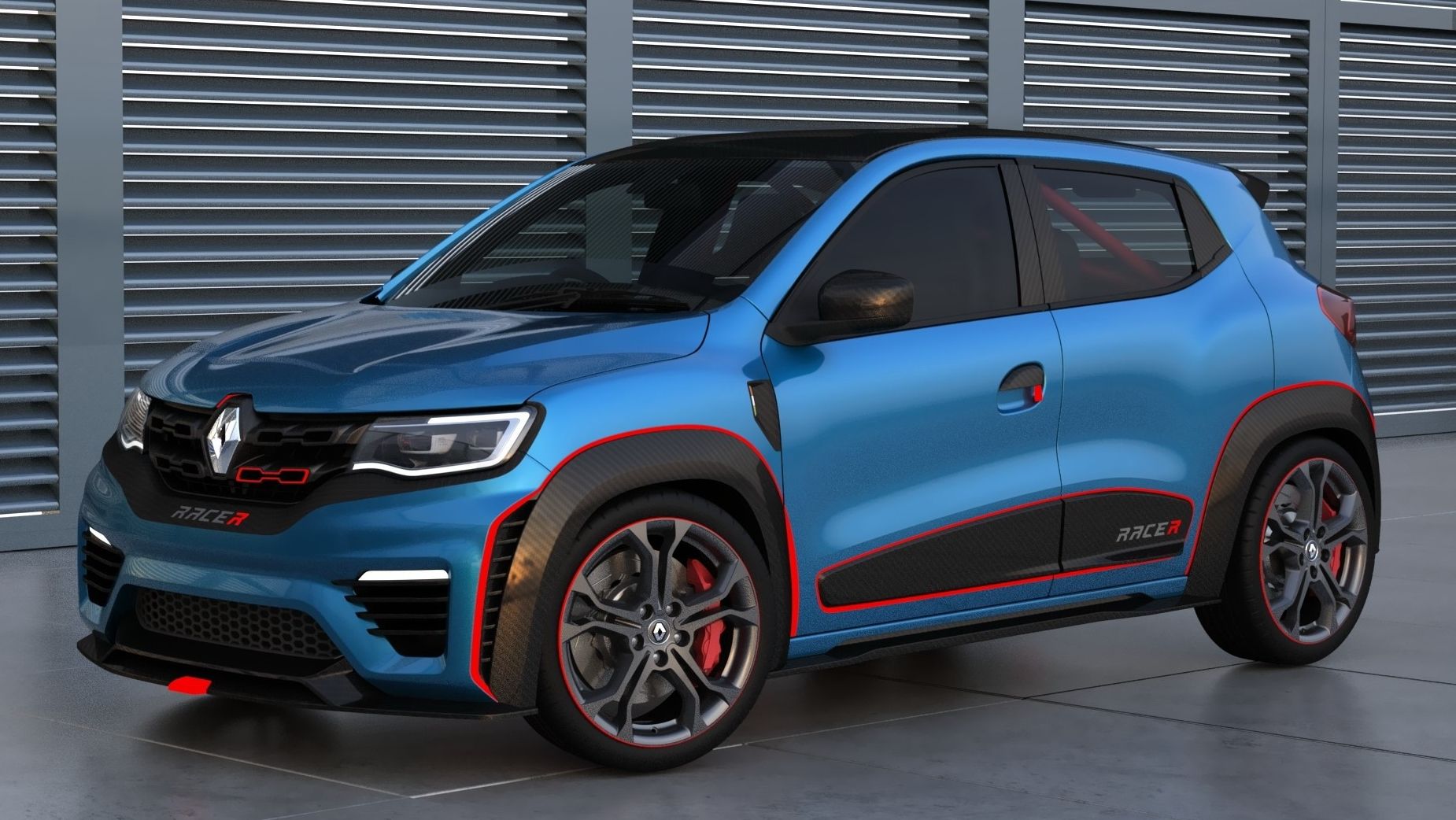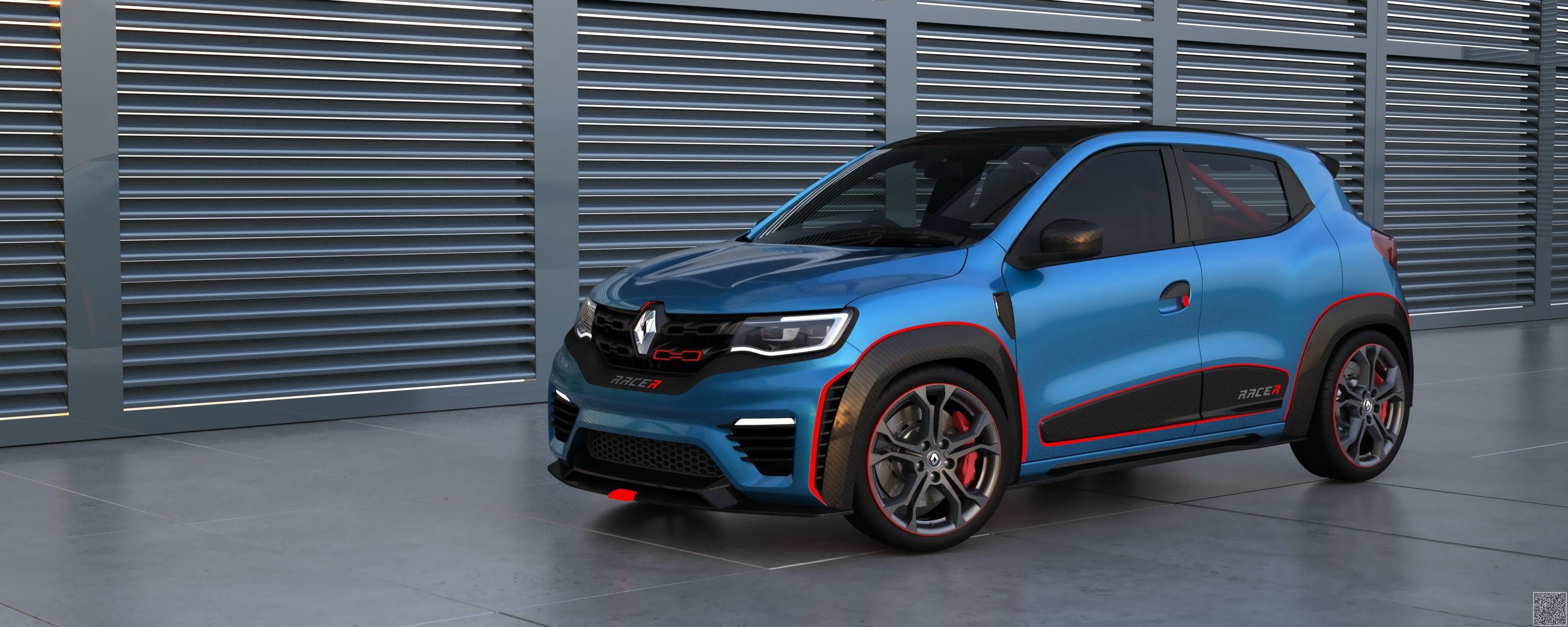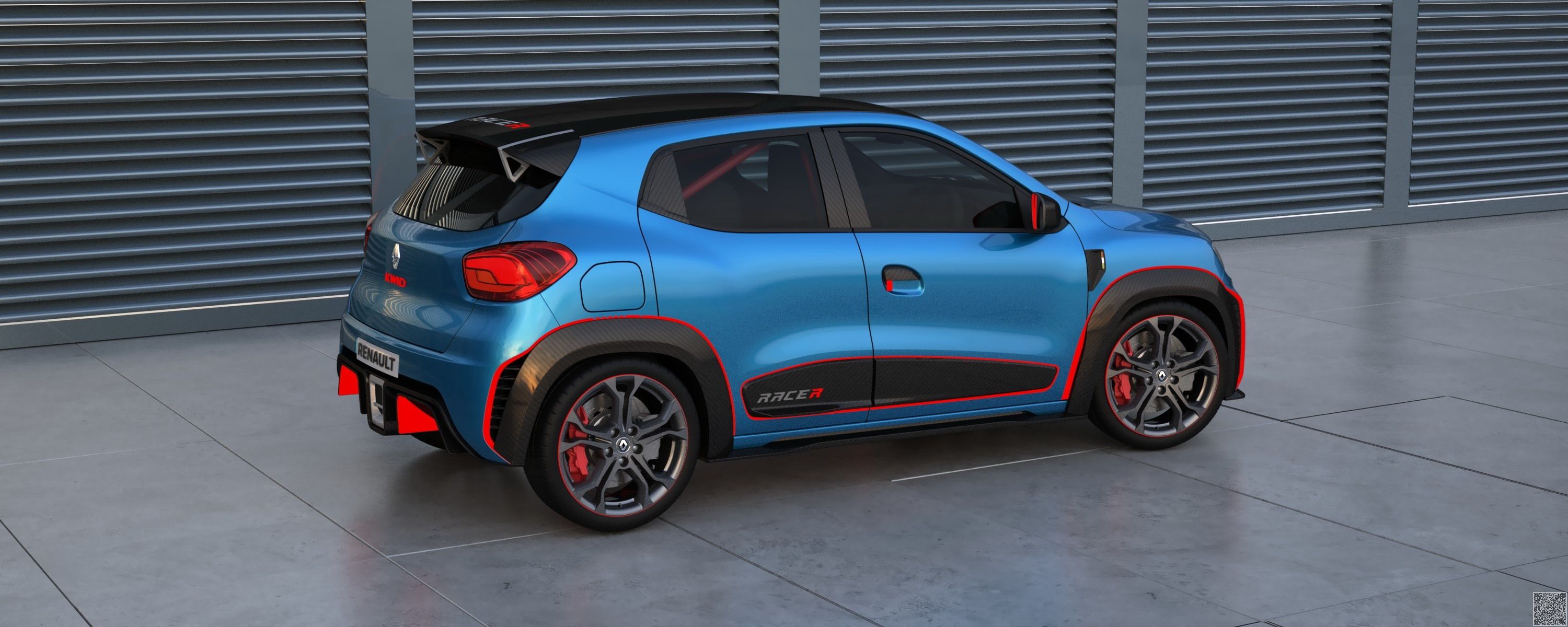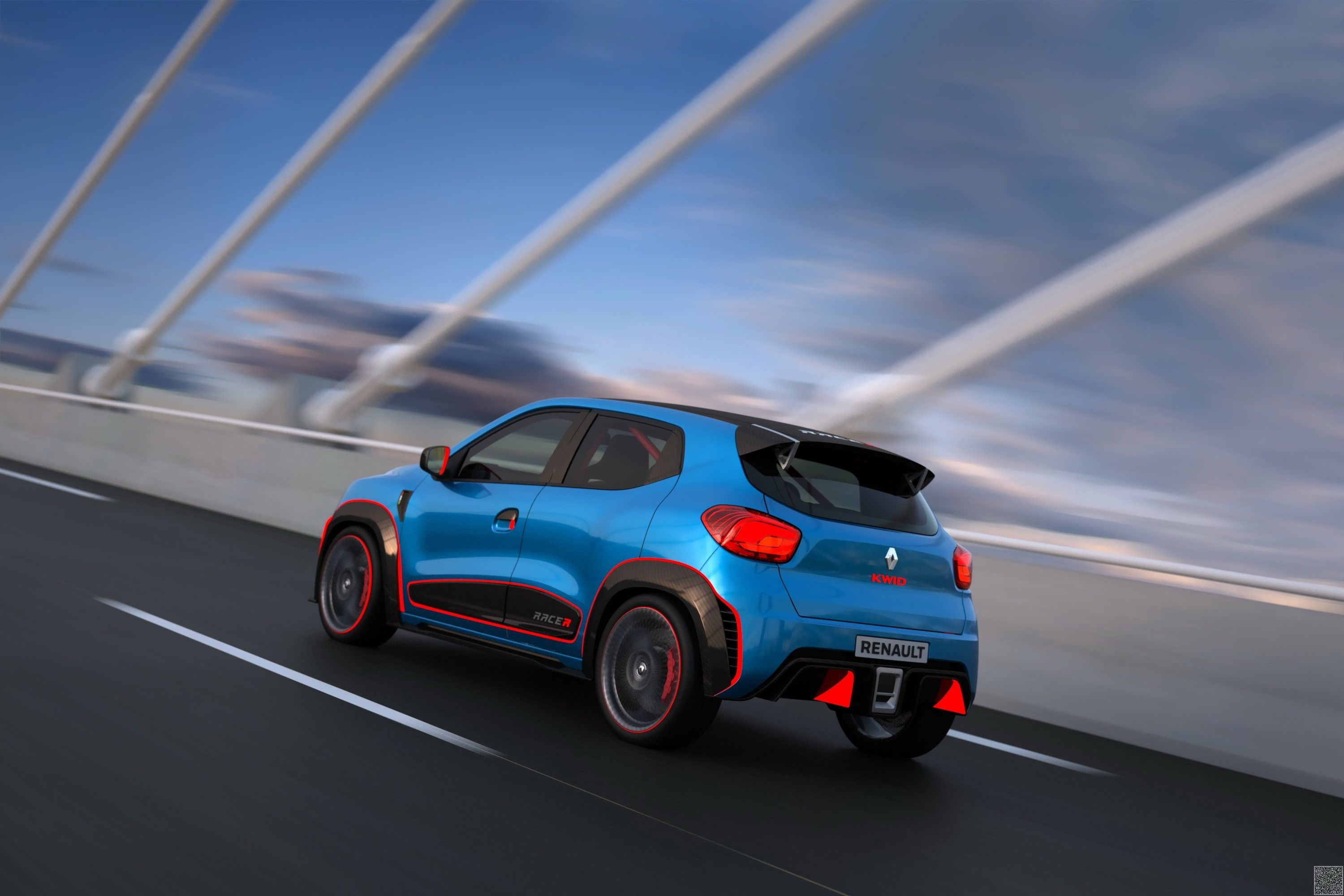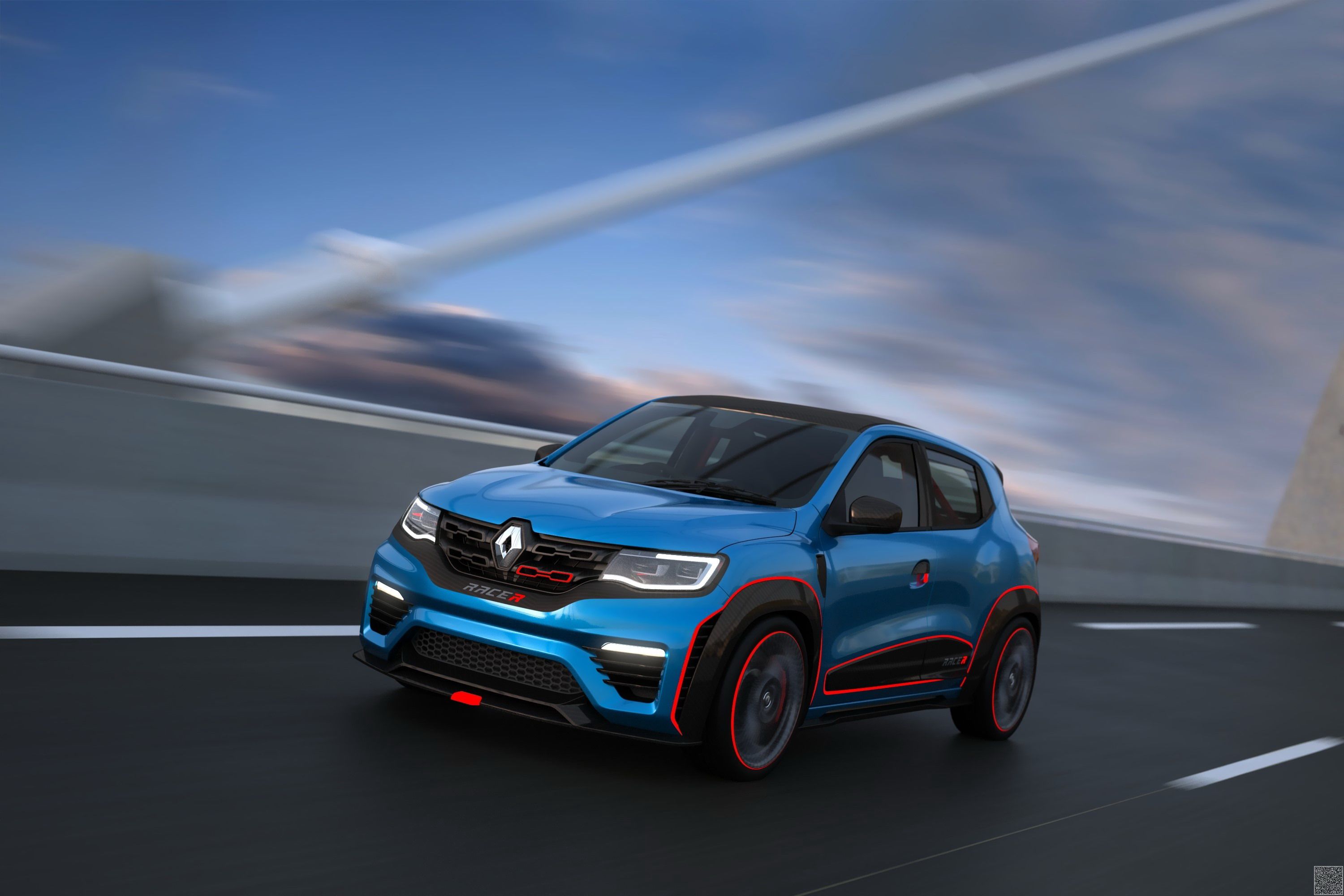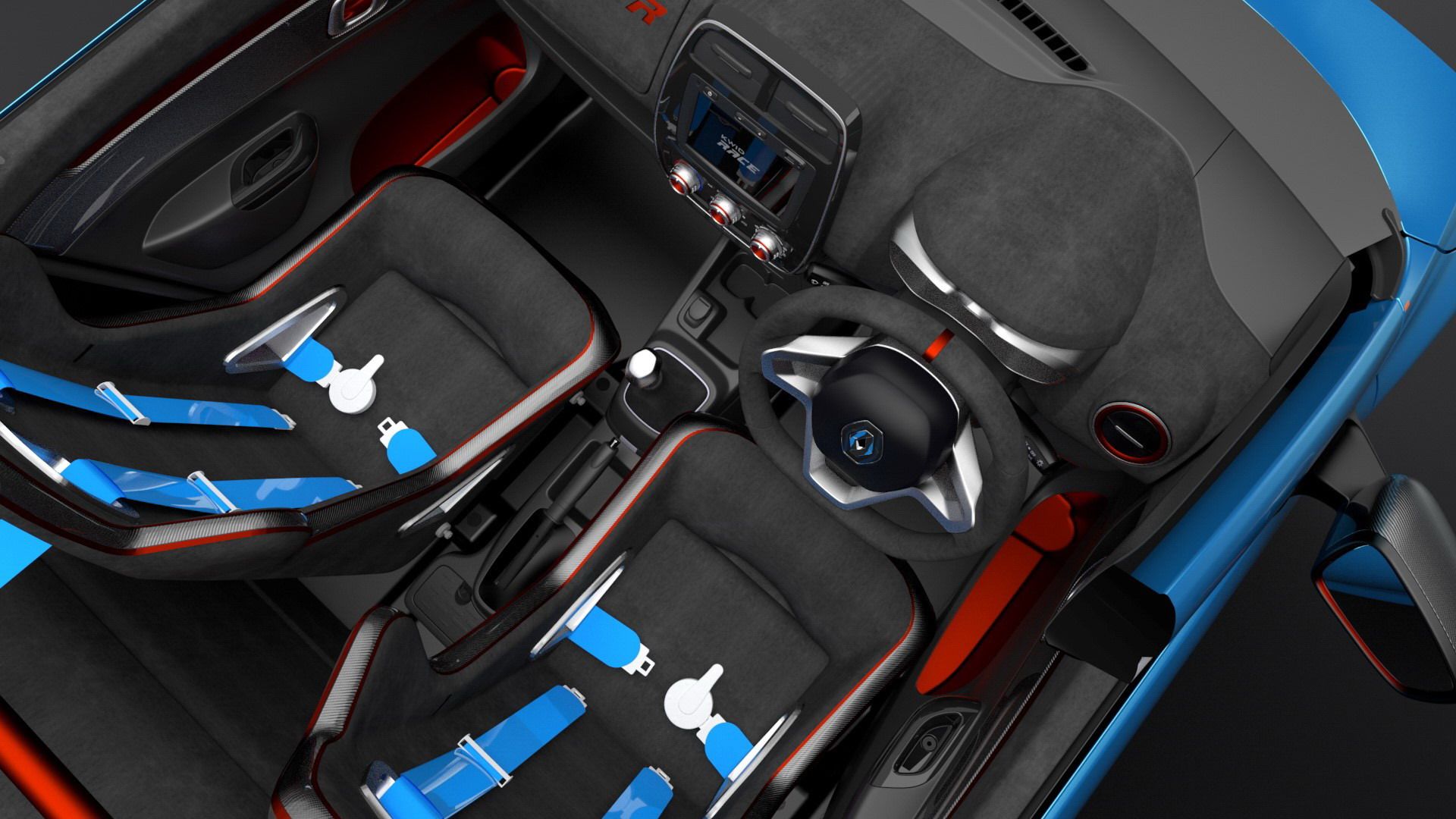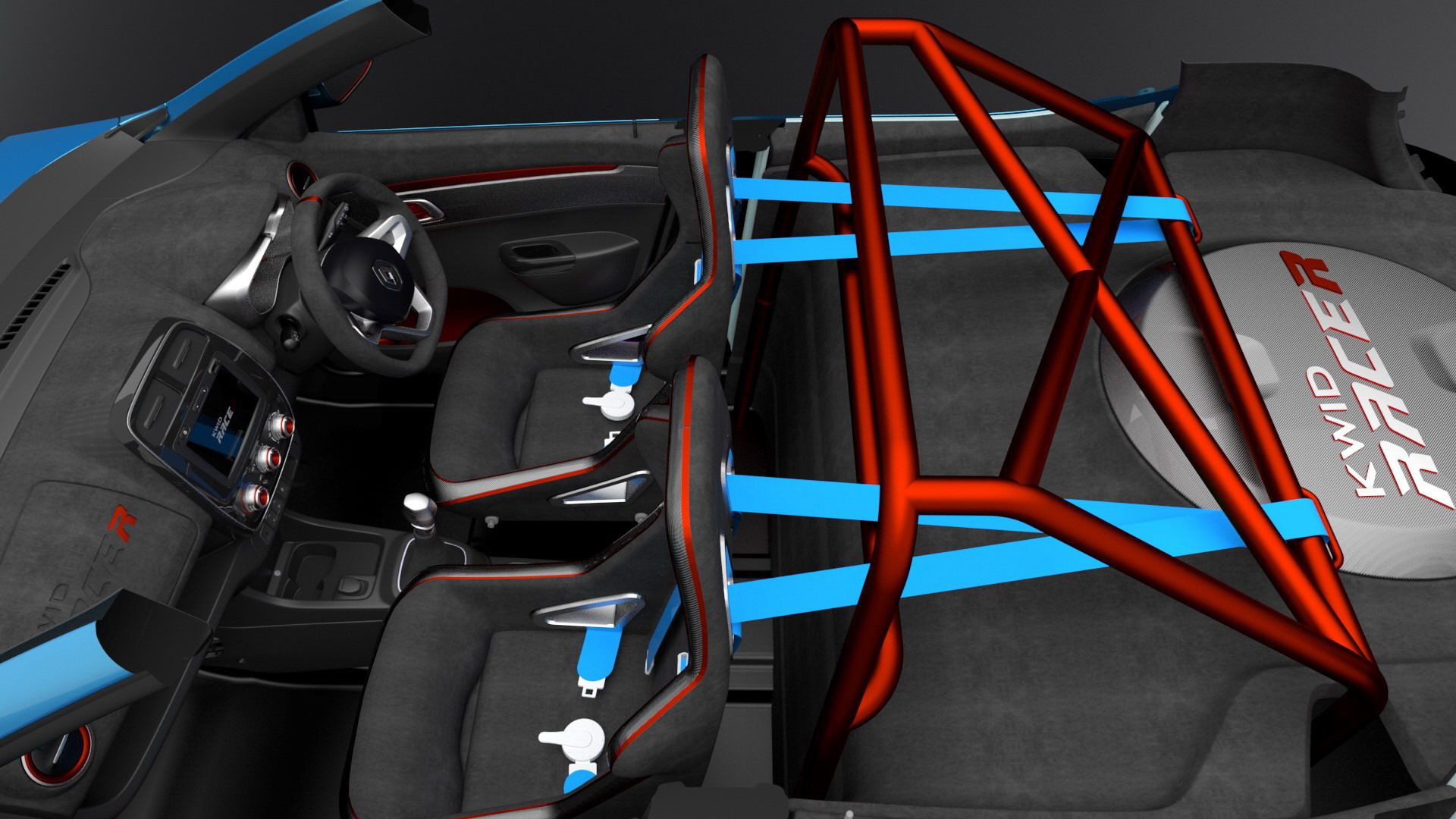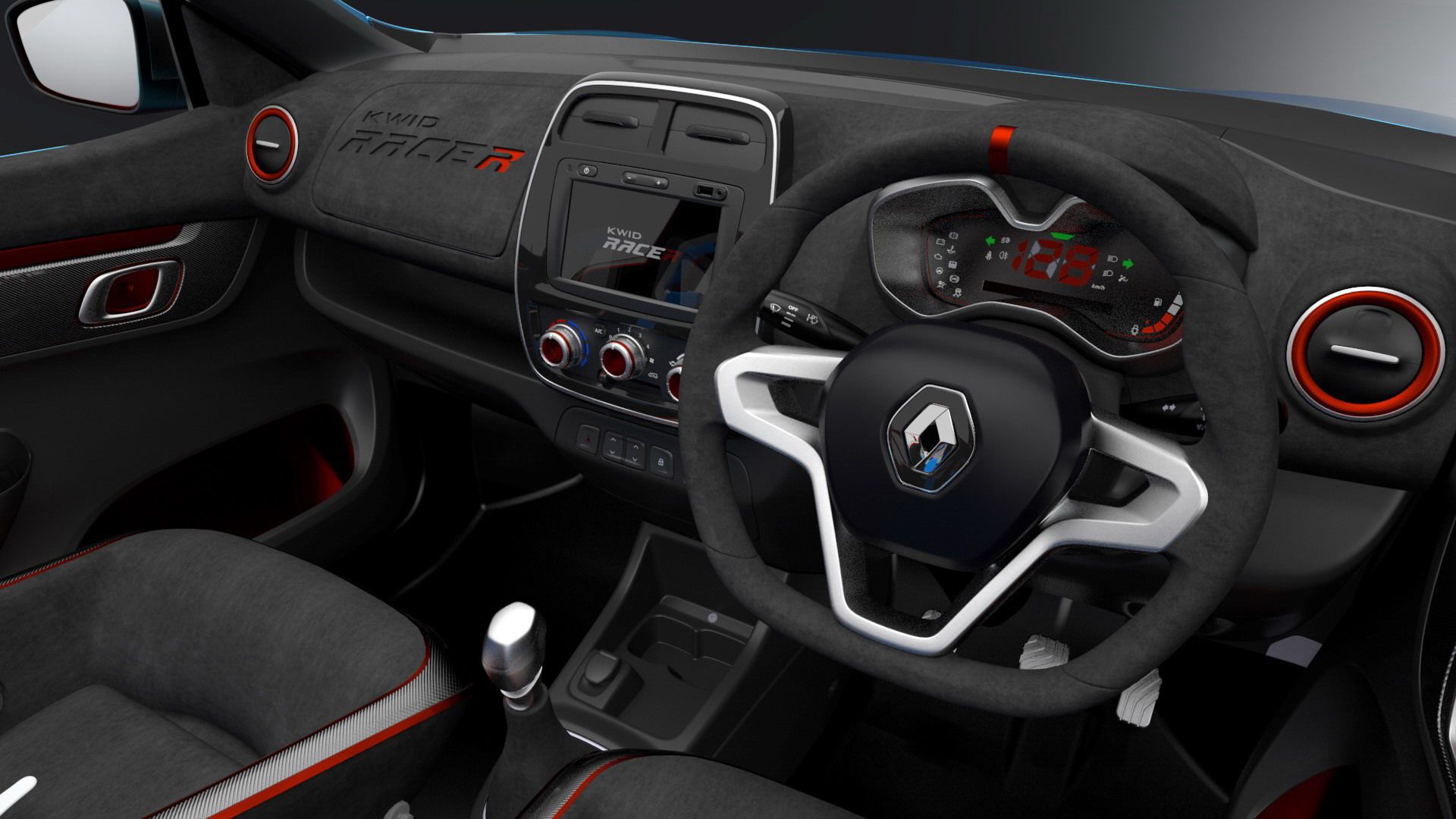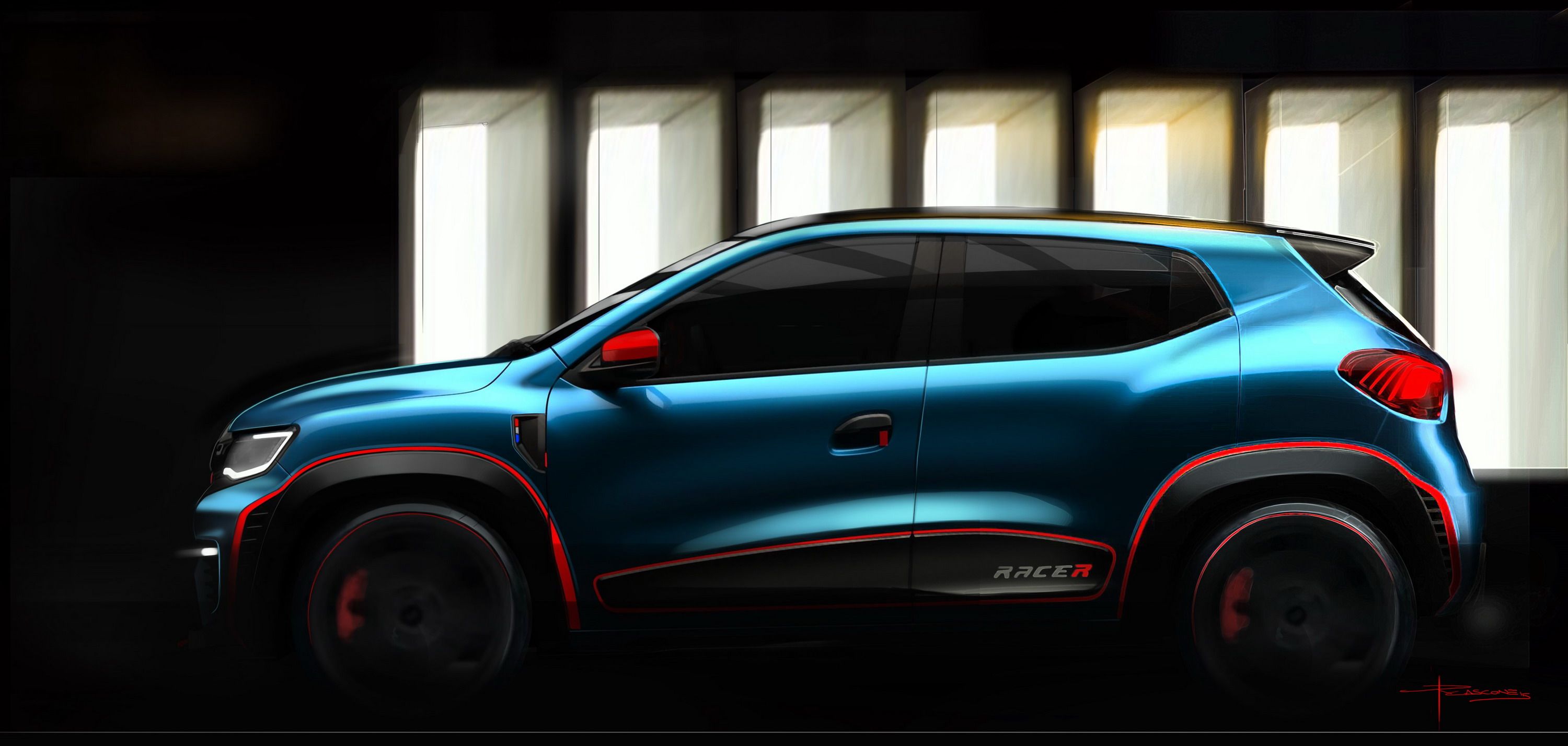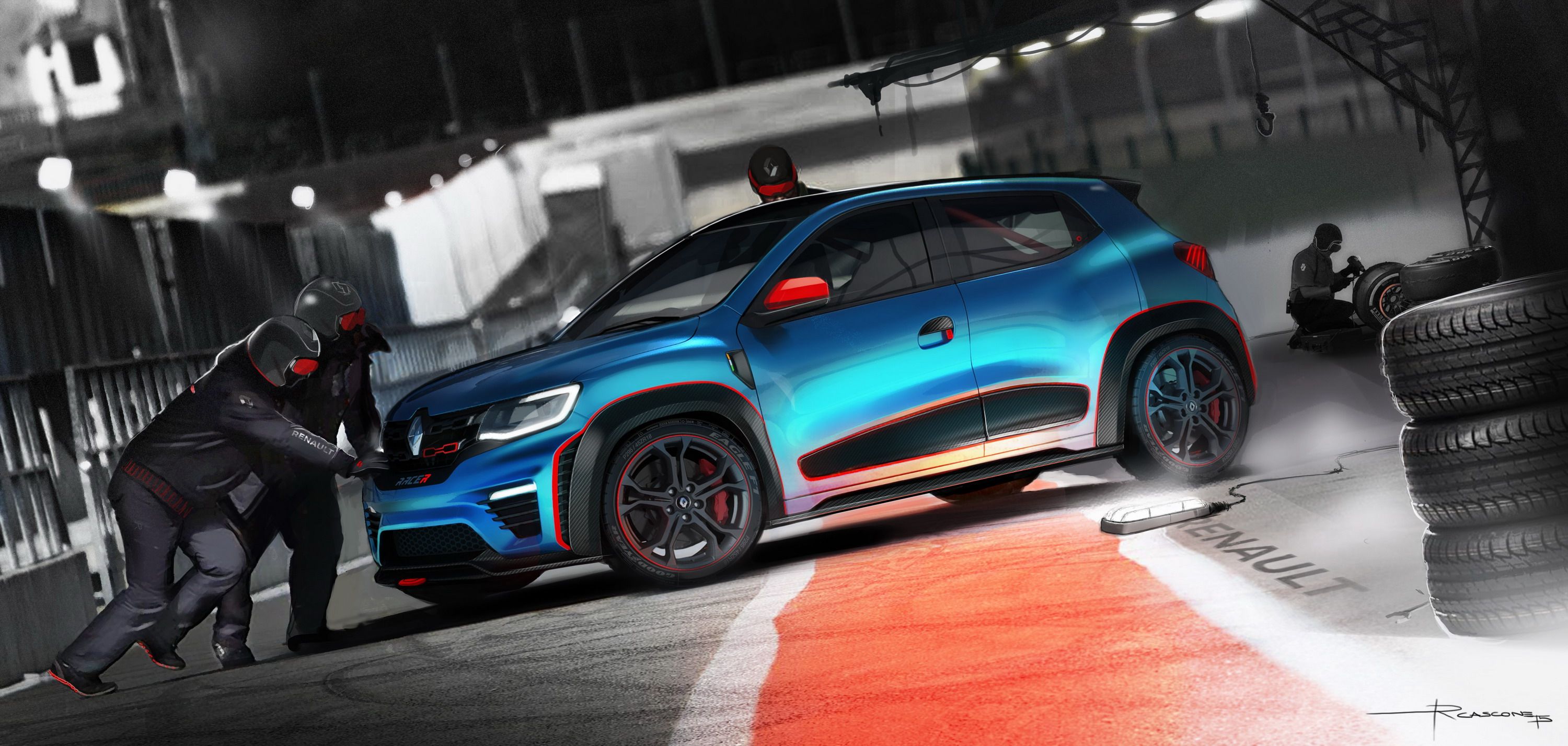Although its products aren't available in the U.S., Renault->ke72 is doing quite well in Europe and Asia. The Clio->ke1021 and Logan->ke1046 (sold as Dacia->ke1020 in Europe) are big hits on the compact market, while the Duster->ke3397 crossover->ke288 is selling like hotcakes in several countries. More recently, Renault launched an even smaller SUV->ke145 in India. Dubbed Kwid, it is slightly larger than Renault's smallest car, the Twingo,->ke1110 and rides on the new CMF-A platform jointly developed by Renault and Nissan.->ke62
Introduced in May 2015 and put on sale in September, the Kwid->ke5161 became an instant hit in India, gathering 70,000 orders in only two months (10 percent of effective market shares in its segment). Looking to build on the Kwid's immediate success, Renault unveiled two new concept cars->ke169 at the 2016 New Delhi Auto Expo, one of which is Kwid Racer.
As the name suggests, the show car is a sportier version of the standard Kwid. It features an aggressive body kit, a special blue exterior with red accents, bucket seats, and even a roll cage. The Racer was launched alongside the Kwid Climber, a concept showcasing the mini SUV's off-road skills, but unfortunately none are slated to go into production. Despite that, the Kwid Racer is actually a cool crossover that would attract a lot of attention in Europe should Renault greenlight it for production, which is why we decided to have a closer look at it.
Continue reading to learn more about the Renault KWID Racer Concept.
2016 Renault KWID Racer Concept
- Make: Array
- Model: 2016 Renault KWID Racer Concept
- [do not use] Vehicle Model: Array
Exterior
Sporting design cues seen on the Twingo and Duster, and a profile that reminds a bit of the Nissan Juke, the KWID isn't the kind of crossover we'd normally call pretty. However, with the Racer concept, Renault managed to turn the mini SUV into an exciting vehicle to look at. The French redesigned the KWID's front fascia almost completely, keeping only the grille and the shape of the headlamps from the standard model. The headlamps now feature smaller, rectangular LED lights and C-shaped lighting signature, while the area just beneath the main fascia is finished in matte black (with a carbon-like pattern) and has gray and red "Racer" lettering. Below, there is a new bumper that has nothing in common with the stock model. The round foglamps have been replaced by thin, rectangular LED units, while the foglamp surrounds have been reshaped to look like cooling vents and gained horizontal strakes. The main intake is significantly larger and feature a honeycomb-pattern grille. A big splitter suggests that the Kwid Racer has a lower drag coefficient.
Changes are just as interesting on the sides. The original cladding around the wheel arches has received the same carbon-like paint seen up front, and so did the massive insert just above the side skirts. The new inlays also feature bright-red surrounds that provide a flashy yet tasteful contrast with the metallic blue paint. Other changes include new vents on the front fenders, revised front door handles, deleted rear handles, and new five-spoke wheels with red accents.
More cool features can be seen around back. The standard bumper was ditched for a revised section that includes a two-piece diffuser, while the taillights sport a fancier cluster pattern. The "KWID" lettering below the Renault badge is red instead of the usual chrome, and unlike other similar accent features, it looks a bit out of place. The concept's rear end is rounded out by a larger tailgate wing in carbon finish and "Racer" lettering.
Overall, the KWID Racer is one hot crossover that actually looks like a hatch thanks to its lowered suspension. All it needs is a Gordini badge for a bit of classic Renault heritage.
Interior
Before we proceed any further, the are a couple of things we'd like to mention about the KWID's standard interior. First, the crossover comes with a standard multimedia touchscreen, an uncommon feature for its segment. Second, outside the touchscreen, the cabin is rather spartan, consisting of simple, clean surfaces made from hard plastic and very few optional features to choose from.
Having said that, the KWID Racer's interior is a significant departure from the original. Although the design of the dashboard and door panels are almost identical to the standard model's, nearly every surface is covered in Alcantara. What's more, Renault added numerous aluminum and carbon-fiber inserts, giving the mini SUV a more premium appearance. Red accents are present in the cabin as well, but this time around, Renault used anodized red to give the interior a splash of color. The bright hue can be seen on the A/C vents, door panels, center stack, seats, and the steering wheel's 12 o'clock stripe.
To further enhance the concept's race-inspired appearance, the French also replaced the standard seats with bucket seats that have four-point harnesses. Behind the front seats, there's an anodized red roll cage instead of the KWID's rear-seat bench. The driver of the KWID Racer benefits from a digital rev counter, a telemetry display, and a leather-trimmed, sports steering wheel with a race-spec alloy frame.
Drivetrain
Renault had nothing to say about the concept's drivetrain, but we do know that the standard KWID comes with an 800cc three-cylinder engine under its hood. As you'd except from such a small unit, output is rather modest at only 54 horsepower and 53 pound-feet of torque. But, while it may not be quick from 0 to 60 mph, the KWID is very efficient, having a fuel economy rating of 25.17 mk/L on the Indian cycle. That converts to 59.2 U.S. mpg. Shifting duties are handled by a five-speed manual, with no automatic options yet. Given the KWID Racer's aggressive exterior and sporty interior, a stock engine would be disappointing performance-wise, but we can't draw a proper conclusion until Renault spills the beans.
Conclusion
The Renault KWID might be a boring mini SUV whose only impressive feat is its fuel economy, but the KWID Racer is simply stunning by design. I would dare say it's the most awe-inspired concept Renault has come up with in recent years in terms of show cars that can easily become production models. Unfortunately, there's no info as to what engine lurks under the hood, and knowing Renault, the KWID Racer won't see the light of day as a production model. And even if it did, there is no guarantee that it would get a more powerful drivetrain and a chassis tuned for spirited driving. But, the idea behind the concept is downright awesome and I'm sure the KWID Racer would be able to give the more established hot-hatches a run for their money.

